Description
YOU ARE ADVISED TO COPY THESE INTRODUCTORY NOTES TO ACCOMPANY YOUR DOWNLOAD, AS THEY EXPLAIN THE CONTEMPORARY BACKGROUND AND SOME OF THE CONTENTS OF THE DOCUMENT.
Although several thousand copies would have been printed, for distribution to every station, goods depot, carriage sidings, loco depot, individual loco driver, guard and permanent way ganger, the survival of this document is a minor miracle, given that it had a designed life of just over a week.
File copes would be retained at the General Superintendents Office, and the Offices of Distict and Divisional Managers and Superintendents. Elsewhere, once out of date, these Special Traffic Notices were just too useful for lighting fires, making spills to light the gas or pipes, jamming the rattling sliding windows in signal boxes.
This issue is of particular interest because it came out when the Great War had been in progress for around eleven weeks, but there is little in these pages to indicate that anything unusual was happening. War was declared on 4 August, 1914, full mobilisation was decreed and on 6 August the despatch to France of three infantry divisions and one cavalry division of the British Expeditionary Force was ordered. Planning for this eventuality had begun at least two years earlier, by the Railway Companies and the War Office and since then the arrangements had been subjected to constant checking and revision. On 9 August, the first of 334 special trains from all over the Kingdom left for Southampton, where its troops were detrained and embarked upon a ship within 20 minutes. The remaining trains would arrive at 12 minute intervals, during day light hours until 17 August.
The following day, 18 August, having preserved secrecy thus far, it was announced that the BEF, 68,847 officers and men, 481 officer’s horses, 21,042 riding and draught horses, 160 pieces of artillery, 1,751 4-wheeled vehicles 695, 2-wheeled vehicles, 97 motor bicycles, 1,271 ordinary bicycles, 2,550 tons baggage and stores had been safely landed in France. All without a single instance of loss, damage or injury to man or beast, just 14 days from the outbreak of war. Deployed to protect the left flank of the French army at Mons, the elements of the BEF were subjected to a heavy German artillery bombardment at dawn on 23 August, followed up by an infantry attack by an overwhelmingly superior force. Heavy fighting during the day, when the French began to retreat, caused the BEF to undertake a fighting withdrawal from Mons beginning during the night. They and the French withdrew towards the river Marne. The BEF sustained 1,600 casualties.
Fighting resumed on 26 August at Le Cateau. The German advance was held at the cost of 7,815 casualties, including 2,600 taken prisoner. The Allies further withdrew to defensive positions along the river Marne, where further fighting ensued from 7 to 12 September, and the German advance was finally halted. British casualties – 1701. In 3 weeks, the BEF had suffered over 13% casualties – killed, missing, wounded or taken prisoner, but the line of trenches which would extend from the North Sea to Switzerland had started. Of course, these were not the sum total of losses by the end of October, there had been fighting elsewhere, as well as naval engagements. On 22 S3ptember, the light cruisers Aboukir, Cressy and Hogue were sunk by a German U-boat in the north sea, with the loss of 1600 lives. The gross total by the end of October was 57,000 for all ranks and 3,844 Royal Navy Casualties. On 21 October, the first of Ypres began, on the following day the British Government ordered the arrests of all enemy aliens resident in the country. On 1 November, the disastrous naval battle of Coronel, off the coast of South America took place, with heavy British losses. Events had happened with almost bewildering speed, and in the last week of October 1914. the British public knew little of what had taken place.
“ BUSINESS AS USUAL” The Government at least did not expect that it would be “over by Christmas” whatever saloon bar pundits were saying, and once the BEF had been assembled and despatched, announced that it would be “Business as Usual” at home. PM Asquith and Chancellor Lloyd George wanted to maintain public morale, to maintain normal business activity and associated tax revenues, and to prevent the hoarding of gold currency. Lloyd George was particularly anxious that the Railway Companies raise as much revenue as possible. Every pound which they earned was a pound less that the Treasury would have to pay them at the end of Government control. From the public point of view “Business as Usual” began to end with the mass arrest and internment of enemy aliens on 22 October, taking hundreds of harmless butchers, bakers, waiters, hairdressers and musicians out of circulation. All the able bodied ones who might have caused trouble, had long since left of their own accord to fight for the Fatherland.
So this week 23 – 30 October can be seen as the end of a kind of “Phoney War” period, when the impact of what was taking place had not yet struck home. Overall casualty figures were dispiriting, but while next of kin were informed, the endless lists of dead, missing and wounded, had not yet begun to appear in the papers. In November the Defence of the Realm Consolidation Act came into force and steadily impacted more and more on civilian life. Opening hours for the sale of alcohol were severely reduced, it became a criminal offence to buy an alcoholic drink for a soldier in uniform, censorship increased and the first Zeppelin bombing air raids two months later introduced a further slew of regulations about showing lights, lighting bomnfiresw, even the flying of kites was prohibited.
The Railway Companies at first were encouraged to carry as many passengers as possible, mostof thempublished their “Holiday Guides” for 1915, but as the yrar wore on, train services wereincreasingly curtailed, due to staff shortages caused by a flood of volunteers to join ui, increasing arrears of maintenance, and rapidly growing traffic in raw materials and munitions. In some respectsthis document represents the peak of service which the railway was able to offer, before cuts had to be made.
The first thing to notice is the astonishing number of excursion trains half-day and day, being run during this, the last week in October. Apart from specials in connection with horse racing at Stockton, including horse specials from and to the training stables at Leyburn, specials were run between York and Liverpool for a football match, and what were presumably military specials from Strensall near York where there was a large barracks, to Leeds and return – purpose not specified.
There were inward special excursions from the Midland Railway and the Lancashire and Yorkshire. No special trains were required in connection with a horse sale at Tow Law or St. Luke’s Cattle Fair at Kirkby Stephen, merely notice that they were taking place, and if required appropriate livestock vehicles could be attached to the rear of service trains. An eyesight testing special was run on two days for engine drivers between York and Pilmoor. Two football teams have reserved accommodation, York City and Notts. Forest. While 25 “Poor Children” are travelling from Hunmanby to Rotherham.
Because of its wide circulation, these documents were a useful means of communicating with staff,
So there are appeals for missing ropes, barrows and wagons and two or three pages of job vacancies for clerks, station masters and signalmen, these last two giving details of the accommodation (non have bathrooms) and rents of the tied houses that go with the jobs.
PREVIEW BELOW – MAY TAKE A WHILE TO LOAD.

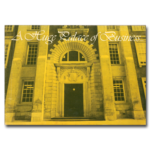

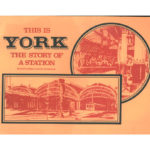

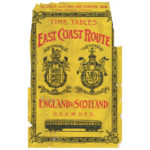

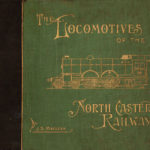

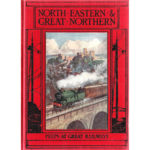
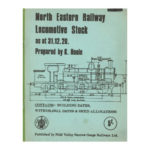
Reviews
There are no reviews yet.